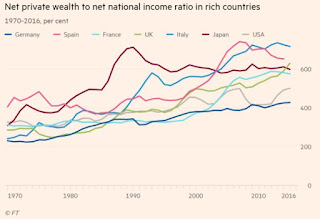In the wake of the '08 global crisis, the role of financial stability committees (FSCs) became more important than ever. The majority of regulatory solutions-based dialogue today tends to revolve around central banks, and macroprudential policies. The Brookings Institution is one such FSC entity that convenes to implement these tools offered by the macroprudential toolkit. But what exactly are these macroprudential tools?
 Basically in a nutshell, it's nothing extremely new or novel. It first came about in the 1970s, but under a different name. By focusing on things like removing unnecessary restraints to credit growth, boosting credit supply, and building up buffers to protect the financial cycle from banks (and vice versa,) it looks at macro-economic policy measures to keep the whole financial system stable, rather than individual institutions or specific capital ratio requirements for types of institutions (as the '08 crisis proved these could be loop-holed around. As a "school of thought," this perspective on reducing risk by keeping stability has been endorsed and embraced by the IMF, World Bank, key central banks, and powerful think-tanks.
Basically in a nutshell, it's nothing extremely new or novel. It first came about in the 1970s, but under a different name. By focusing on things like removing unnecessary restraints to credit growth, boosting credit supply, and building up buffers to protect the financial cycle from banks (and vice versa,) it looks at macro-economic policy measures to keep the whole financial system stable, rather than individual institutions or specific capital ratio requirements for types of institutions (as the '08 crisis proved these could be loop-holed around. As a "school of thought," this perspective on reducing risk by keeping stability has been endorsed and embraced by the IMF, World Bank, key central banks, and powerful think-tanks.
However, there's a growing number of critics who say that these macroprudential tools are insufficient to ensure financial stability in the global market.
Indeed, the World Bank has confirmed its adjusted global economic forecast indicates growth slowing down to 2.9%, citing weaker investment and trade. The IMF's forecast is 3.5%, so slightly higher, but they anticipate they'll have to make more downward corrections.
⛈🌤 STORM CLOUDS BREWING 🌧🌦
Leverage ratios for everyone from homeowners to businesses will be important to watch. Manufacturing, production, and services can all be negatively impacted by trade disputes (notably U.S. and China) and governmental fractures (like Brexit, Venezuela). These can cause capital flights where investors quickly pull money from areas they deem too risky, poking holes in the infallibility of the macroprudential approach.
Digital currencies issued directly by central banks have the intention of keeping major means-of-exchange within protected regulation; yet they might have the unintended consequences of hiking interest rates as a result of liquidity shortages.
In the United States, discussions are currently going away from Monetary Policy as seen with Chairman Powell's testimony in U.S. Congress. Check out this video on macro-policy talks in the U.S. from Wednesday:









